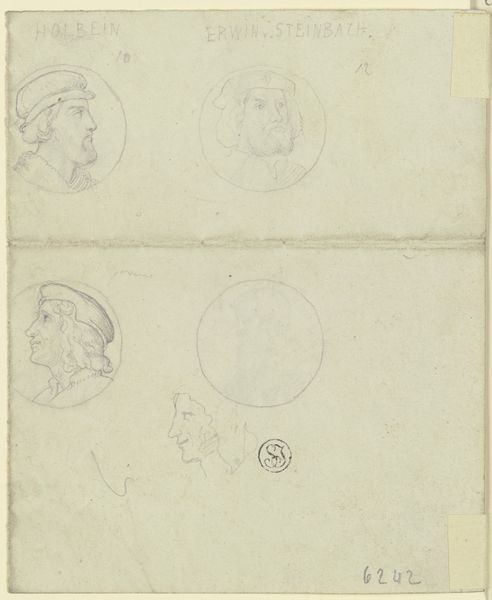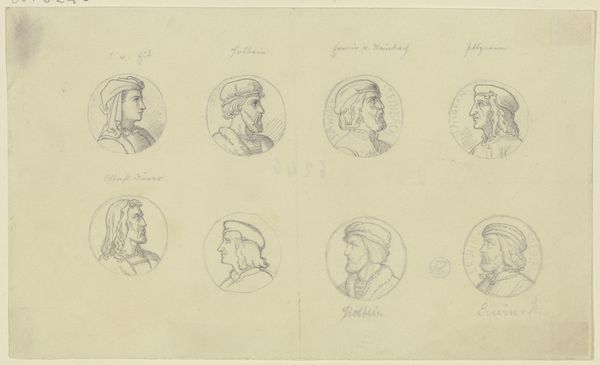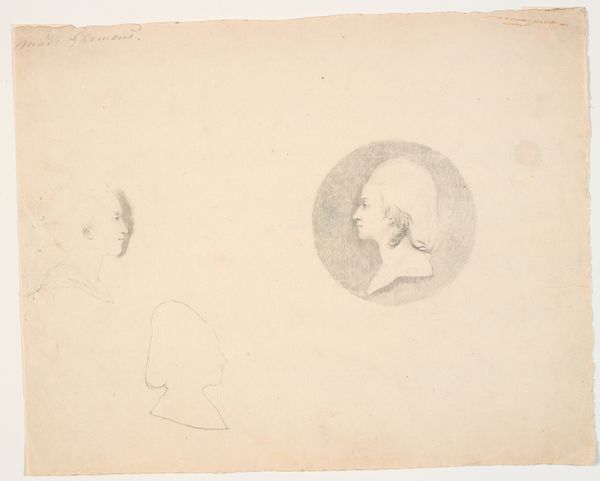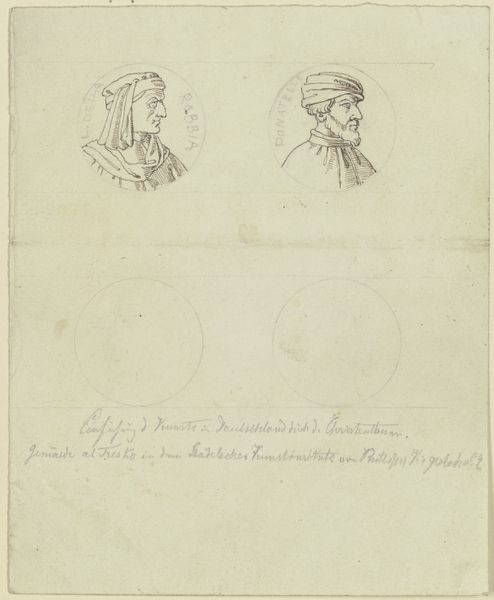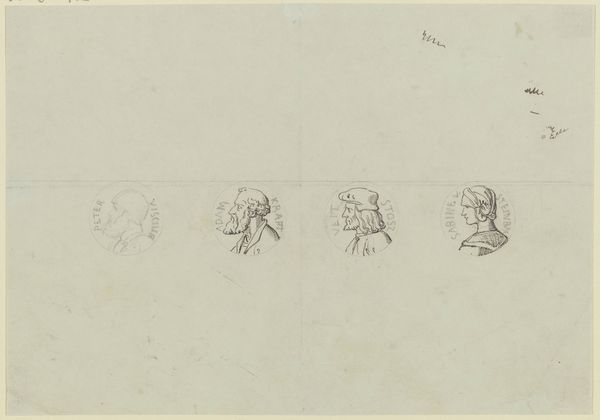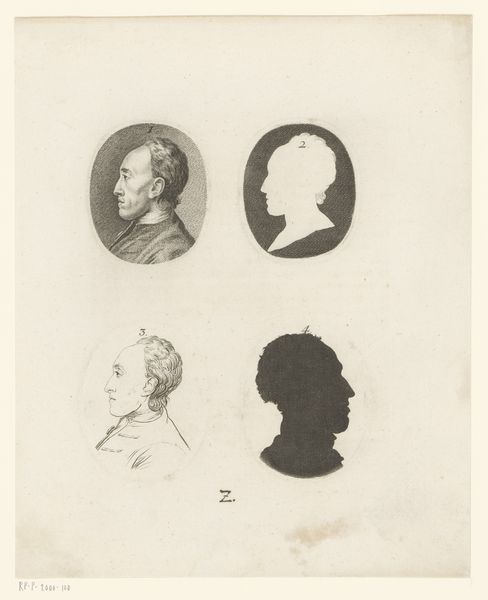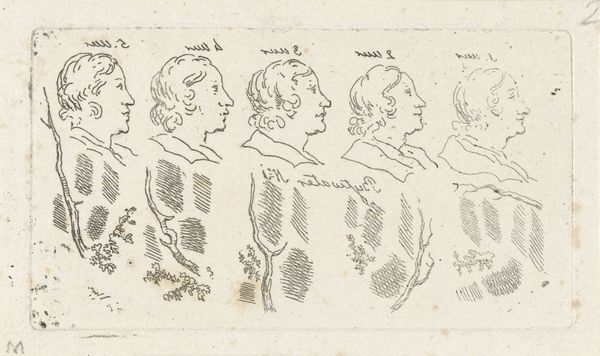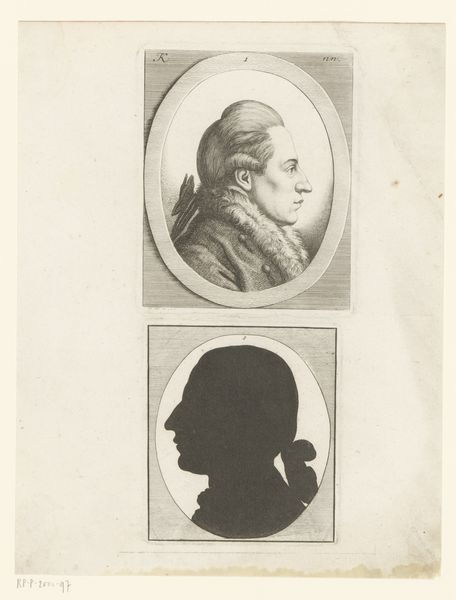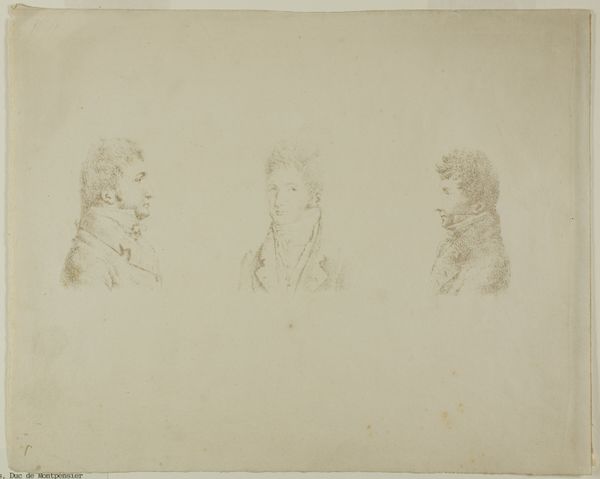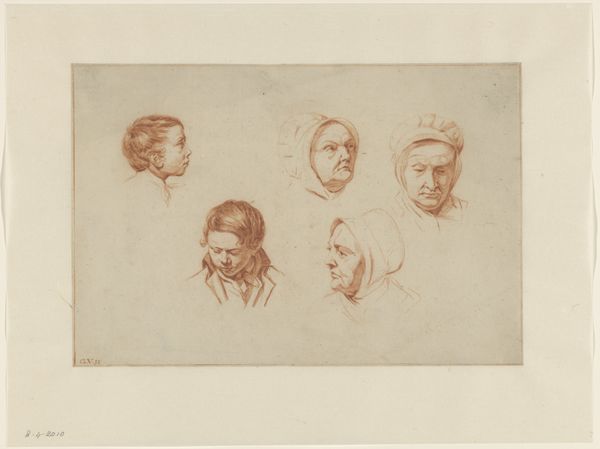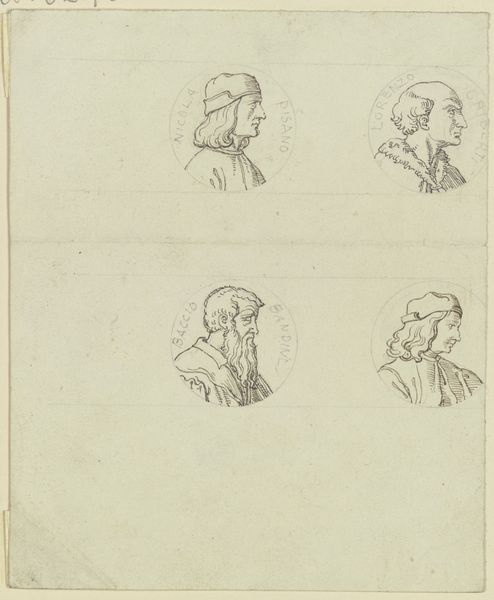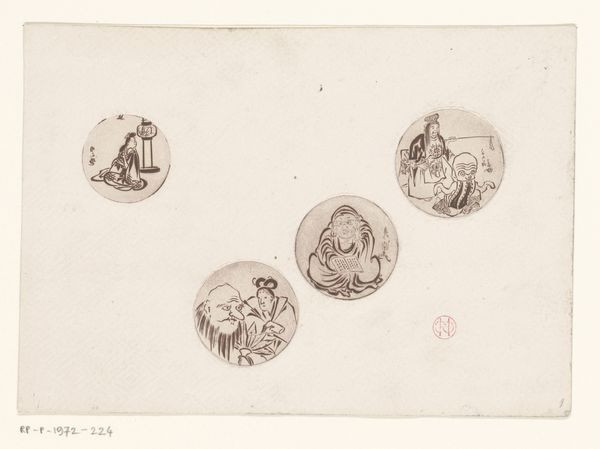
Köpfchen zur Einfassung der Veitschen Freskobilder im Städelschen Kunstinstitut
0:00
0:00
drawing, paper, pencil, graphite
#
portrait
#
drawing
#
figuration
#
paper
#
11_renaissance
#
pencil
#
graphite
#
academic-art
#
italian-renaissance
Copyright: Public Domain
Curator: What a delicate study! We're looking at a drawing titled "Kopfchen zur Einfassung der Veitschen Freskobilder im Städelschen Kunstinstitut," attributed to Eugen Eduard Schäffer. It's rendered in pencil and graphite on paper. Editor: It has the feel of a preliminary sketch, somehow fragile, and caught between precision and erasure. Curator: Precisely. The composition consists of several small, circular portraits. Based on the style and subject matter—male figures with period headwear—we can situate it in the Italian Renaissance tradition, though the artist lived much later. Note how it mimics Renaissance portrait medals. Editor: I’m curious about the labor involved. Someone sat and meticulously created each of these portraits; in the process of practicing or replicating historical styles, that is a kind of work. What kind of training was required for such delicate rendering with these rudimentary materials, such as pencil and graphite? It makes me appreciate the accessibility and availability of the mediums utilized. Curator: And that's where the historical context becomes fascinating. The title indicates these were studies for frescoes within the Städel Art Institute. Schäffer was documenting or perhaps preparing for restoration work? These images themselves could have become part of visual discourse, reproduced to illustrate a variety of academic sources and to preserve knowledge for future scholars. Editor: Right, the institutional framing significantly impacts our interpretation. How would viewing these in a private sketchbook change our reading, versus seeing them presented within a museum context like the Städel? Also the drawing, created on paper, has a more immediate materiality versus viewing this work, if the drawings would have translated into frescoes. Curator: It reminds us how deeply intertwined art, labor, and historical institutions truly are. And how artistic creation, no matter how preliminary it might seem, serves as a dialogue across time. Editor: Definitely, engaging with this drawing emphasizes that no work exists in isolation. Whether an ephemeral sketch or a finished fresco, it participates in a wider social and historical exchange.
Comments
No comments
Be the first to comment and join the conversation on the ultimate creative platform.
